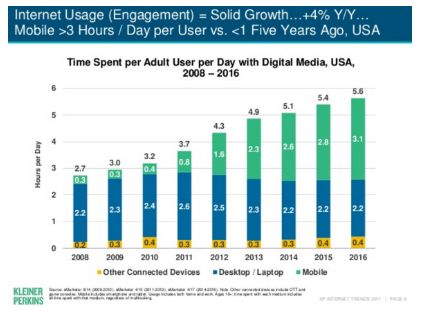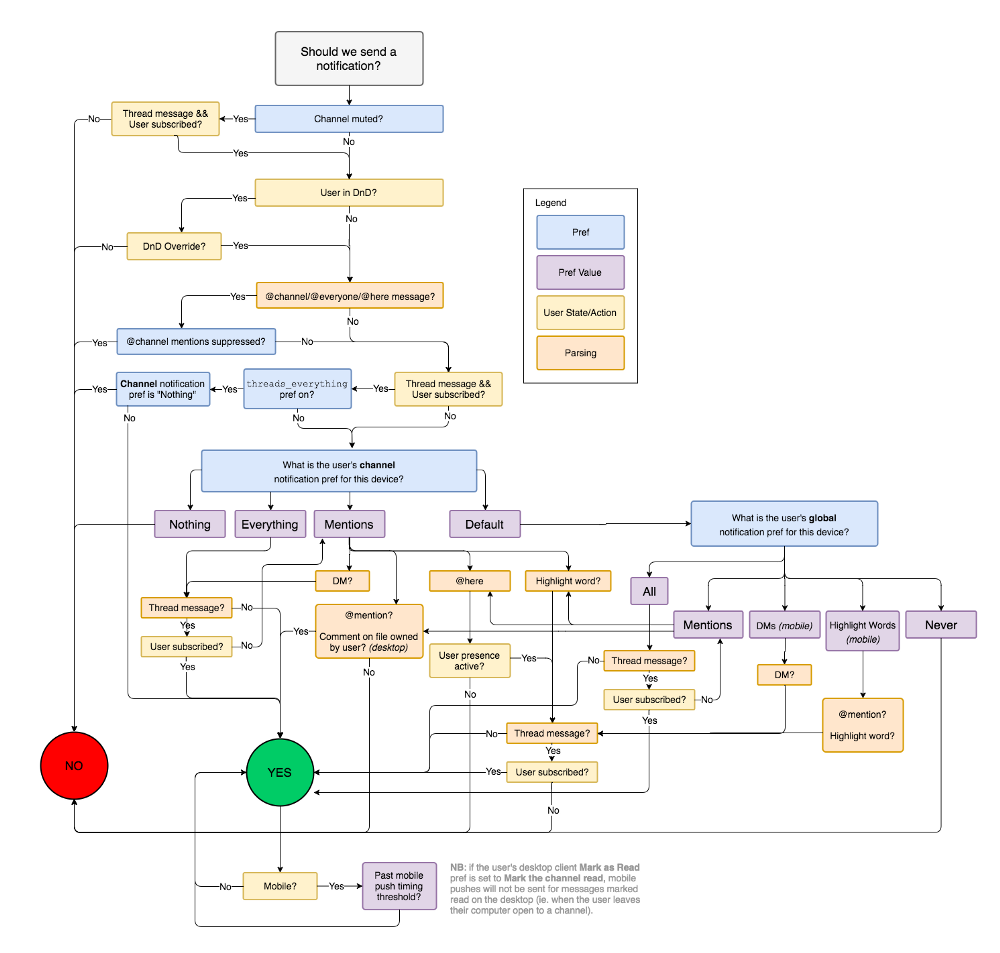Realtime data for smart notifications
It’s becoming the new normal that messaging and collaboration apps and platforms are available across multiple devices.
Business tools like Slack and JIRA offer feature-rich mobile apps, and users increasingly consume content from social networks like Facebook on their mobile devices instead of a desktop or laptop.
This isn’t a surprise – and we’re here to share our perspective on how developers can use realtime data to provide cross-platform users with the best notification experience.
Mary Meeker’s 2017 Internet Trends Report tracks the trend towards increasing mobile adoption:

What’s not stated explicitly in this slide is that that much of this engagement occurs simultaneously – it’s not uncommon for users to have an app open on their desktop and phone at the same time.
‘Dumb’ notifications produce a poor user experience
Simultaneous use of cross-platform apps has created a user experience issue that many of us are familiar with. When a new Trello card is assigned to me, I get a push notification on my phone, a ping in the Trello interface, and an email in my inbox. Due to my Trello integration with Slack, things quickly get worse – I get a notification on Slack on each of my devices. I can get up to 6 notifications tied to a single event.
This isn’t ideal – and as more devices become connected, the problem will only be compounded. Imagine a future where your phone, smartwatch, smart TV, and smart thermostat are all buzzing simultaneously. It doesn’t need to be this way.
Collaboration and messaging app developers can get smart
We didn’t come up with the idea of ‘smart’ notifications (entire companies like Intercom and OpenBack are built to enable them) – but we do have a perspective on how app developers can use realtime data to enable them.
Realtime data is already present in many chat or collaboration apps – typing indicators, read receipts, and live editing are all features that we take for granted. The next step for developers is taking a wider variety of realtime data into account when building notifications into their user experiences.
Luckily, mobile devices offer a wealth of realtime data to developers who want to do this:
Presence and attention-awareness (knowing which device a user is active on) allows a single ping to that device, instead of a ping to all devices. Results-driven logic can drive a secondary notification to another device or channel in the instance the first notification is not responded to. This can lead to some pretty complex logic, as in the case of Slack’s notification tree below:

Slack’s blog post on how they built a lightweight desktop client to handle the complex interactions between team, channel, and user preferences and states when sending notifications is worth reading.
Time and location data is crucial – work notifications don’t need to be sent on the weekend, and pop-up notifications for events or sales are only relevant in bounded areas. Slack enables manual setting of ‘Do Not Disturb’ hours in order to keep notifications from taking over user’s lives. Context can be user-generated (like in the Slack example) or learned based on prior interactions with notifications.
Device and connection state information is underutilized. Know a user has low battery life? Maybe the notification to download the latest game update can wait. Users on Wifi are more likely to interact with rich notifications than those on cellular connections. If a user loses connectivity and many notifications are queued, they may no longer all be relevant when the user is back in range.
Realtime is a crucial component for smart notifications
As users constantly switch devices and platforms, realtime knowledge of their status is key to providing intelligent notifications. Developers who do this well will continue to retain user interest, and those who don’t will have a hard time keeping their attention.
Recent posts
-
We've been acquired by Fastly
-
A cloud-native platform for push APIs
-
Vercel and WebSockets
-
Rewriting Pushpin's connection manager in Rust
-
Let's Encrypt for custom domains
 • filed under
• filed under